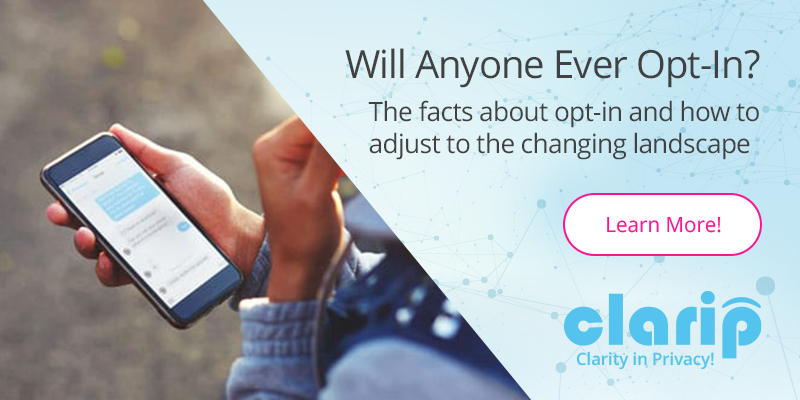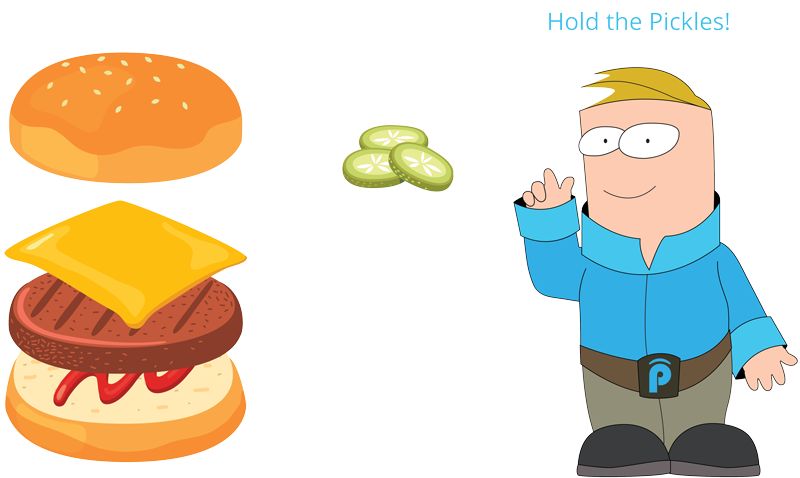Will Anyone Ever Opt-In?

The facts about opt-in and how to adjust to the changing landscape
Opting-Out

Opt-in is a very different arrangement from opt-out. For clarity, it is important to flesh-out the terms. Opt-in is an arrangement in which an individual must take some affirmative action in order to “opt favorably” regarding the choice they are given. Opt-out is an arrangement in which an individual “opts favorably” unless they take an affirmative action to indicate that they do not. Fast food ordering provides the basic examples of opt-in and opt-out. If you order a cheeseburger at McDonald’s in the US, it will consist of at a minimum: a patty, cheese, buns, ketchup, and pickles. If you do not like pickles, you must opt-out, “hold the pickles.” By default, if you order a cheeseburger, it is not assumed that you want French fries. That is why cashiers will often ask, “do you want fries with that?” They are reminding the customer that it is an option to opt-in to getting fries with the cheeseburger. By default, you would get pickles, until you opt-out of receiving them on your sandwich. By default, you would not get fries, unless you opted-in to receiving them.
Thinking about the impact of opt-in, consider two different types of decision makers: informed decision-makers and passive decision-makers. Informed decision-makers are driven by the impact of their choice. Passive decision-makers make the decision (or lack of decision) that requires the least effort. An opt-in regime theoretically should have no impact on the rates at which informed decision-makers opt favorably. If that option aligns with their goals, they will choose it whether it takes extra effort (opt-in) or no extra effort (opt-out). Passive decision-makers uniformly opt favorably only in opt-out regimes. The net result is that conversion from opt-out to opt-in means that a whole population that previously opted favorably (passive decision-makers) now opts unfavorably. This example is clearly oversimplified, but it sacrifices accuracy for clarity and demonstrative value.
What the preceding paragraph demonstrates is that consumers who are motivated to care about privacy (informed decision-makers) are actually influenced by the terms of the opt-in. Similarly, it demonstrates that consumers who are primarily interested in minimization of effort will take the path of least effort.
Impact of Opt-in
Apple’s recent iOS 14.5 now requires mobile apps to ask users for permission to gather tracking data. Flurry Analytics is used in over 1 million mobile applications, which gives them a huge sample size to see the opt-in rates resulting from the iOS 14.5 opt-in change. They can observe behaviors in over 2 billion mobile devices per month. Worldwide, (as of 5/8/2021) only 13% of mobile users are allowing app tracking. In the US, it is even lower, at 5%. Furthermore, 5% of users globally and 3% of users in the US have changed the settings in their device such that apps cannot even ask them to opt-in. They have opted-out of even being asked to opt-in!
This decrease in users opting favorably has a profound impact on businesses. In the study, Privacy Regulation and Online Advertising, Avi Goldfarb and Catherine Tucker found striking results after the European Union enacted the Privacy and Electronic Communications Directive which required user opt-in before companies could collect and use information about consumers for targeted advertising. They found that advertising effectiveness decreased on average by around 65 percent in Europe relative to the rest of the world.
Adapting to Opt-in
Opt-in has important implications for businesses. Generally, opt-in will shrink the pool of users whose data the business can use. Additionally, opt-in will limit the uses for which businesses can use their data. The reduction in usable data will decrease the effectiveness of consumer-directed advertisements as well as research and product development.
There are two obvious responses to this negative outcome. One option is to take steps to minimize this reduction in consumer data. Another option is to take advantage of the shift in accessible clientele.
Win Them Back
| Presentation of Option | Percentage Opting Favorably | |
|---|---|---|
| (1) Notify me about more health surveys. | 48.2 | |
| (2) Do NOT notify me about more health surveys. | 96.3 | |
| (3) Notify me about more health surveys. | 73.8 | |
| (4) Do NOT notify me about more health surveys. | 69.2 | |
| Figure 1 | ||
Researchers have looked into the best methods to get consumers to opt favorably in an opt-in regime. This has long been a research pursuit. In 2000, Eric Johnson, Steven Bellman, and Gerald Lohse published Defaults, Framing and Privacy: Why Opting In-Opting Out. The researchers created four different framings of the same question: Do you want to be notified about more health surveys? The survey participants received one of the four choices as shown in Figure 1. The option that caused participants to opt most favorably was Option 2. 96.3% of participants were happy to NOT NOT be notified (be notified) about more health surveys as long as they didn’t have to check a box to make it happen. If they had to check a box to be notified, that number went down to 73.8%. Only 69.2% of participants were willing to decheck a box in order to NOT NOT be notified (be notified) about more health surveys and only 48.2% of participants were willing to check a box to be notified about more health surveys. So, overall, participants were more comfortable with inaction, and were more comfortable with opting-out framing, rather than opting-in framing. Accordingly, the greatest result for opting favorably was when people didn’t have to take an action and the framing was opting-out. The lowest result for opting favorably was when people had to take an action and the framing was opting-in.
One takeaway from this research is that passive decision-makers do seem to be a relevant demographic. Another takeaway is that “informed decision-makers” as defined above are not the binary complement to passive decision-makers. They may be better thought of as malleable, informed decision-makers. They do steer towards their goals, but can be influenced by the framing of their choices.
More targeted research has been done by Forward Action. Their circumstance was in the context of charity drives and their effort to be able to continue contacting donors after a contribution. They tested out two different approaches to entice donors into opting-in to receive future e-mails. The first approach was to accentuate the impact on bringing about change and whether the donor wanted to receive more e-mails in order to help bring about change. The alternative approach was to entice the donor to opt-in in order to be kept up-to-date on the success of the specific campaign that they had just contributed to. They consistently found that consumers were more interested in the targeted follow-up of a specific campaign rather than the more general notification about ways to help bring about change. The targeted follow-up approach resulted in a 48% opt-in increase in one campaign and a 32% opt-in increase in the second campaign as compared to the more generalized “help bring about change” approach.
Word of Caution
An important caveat to this discussion, especially in light of the foregoing description of some consumers as being “malleable,” is that with GDPR it is important to not just follow the letter of the law, but also the spirit of the law. Some businesses have taken liberties with the requirements of the regulation. Through the use of “dark patterns,” they are finding ways to nudge and influence consumers against the consumer’s best interest. Check back in with us for a future discussion of dark patterns. The takeaway for now is that some dark patterns are illegal under the GDPR. Data controllers have to fairly allow for consent, not obtain consent through trickery, deception, or unconscionable terms. It is important to note that a primary element of opt-in is that by default the consumer opts unfavorably. The consumer has to take an affirmative action in order to opt favorably. This means that the two most successful approaches from the Johnson, Bellman, and Lohse Framing research would not be acceptable ways to achieve opt-in consent from a consumer.
Fortunately, at Clarip, we know how to keep you compliant with the proper opt-in language. We are also willing and able to customize the opt-in presentation for you to help maximize the number of consumers who will opt-in.
Work with what you have
Additionally, or perhaps alternatively to putting effort into increasing the quantity of consumers who opt-in, businesses can focus on the change in who their remaining average consumer is. Businesses are discovering that when the “passive decision-makers” are removed from the equation, the remaining consumers are much more active and responsive. When businesses send e-mails to their opted-in consumer contacts, the e-mail is much more likely to be opened and interactive elements clicked through. Enterprising businesses will find advantages to this more engaged consumer-base.
Conclusion
Opt-in requirements represent a big change. Big changes lead to big opportunities. Clarip can help you customize your opt-in consent language to help you meet your needs and take advantage of the opportunities in front of you. Your informed consumer-base will appreciate your efforts to take care of their privacy when you use our privacy management platform. Ask Clarip today how we can help your business adapt to the new world of privacy! Contact us at www.clarip.com or call Clarip at 1-888-252-5653 for a demo.
















